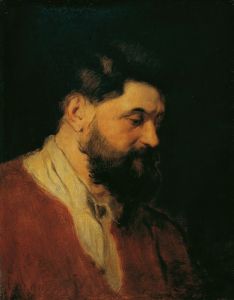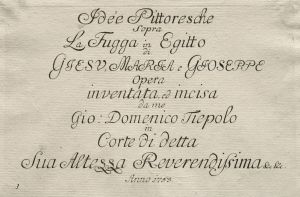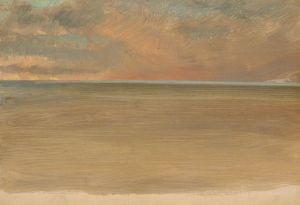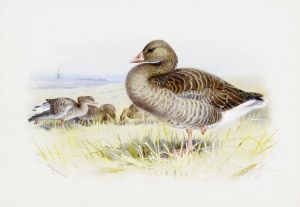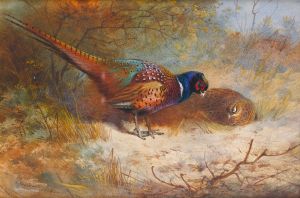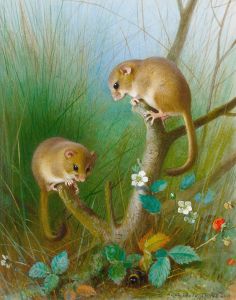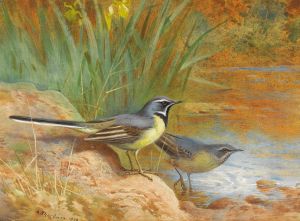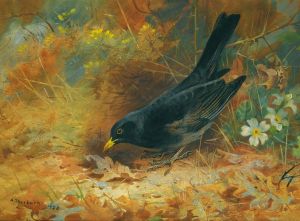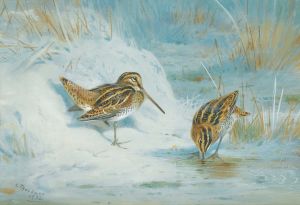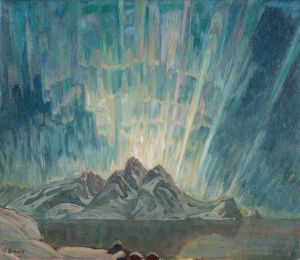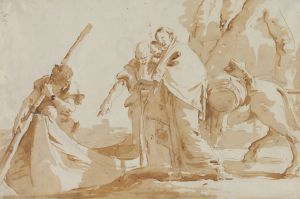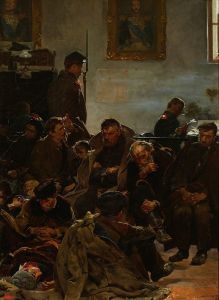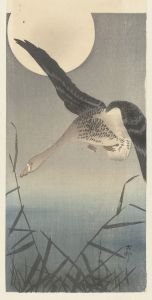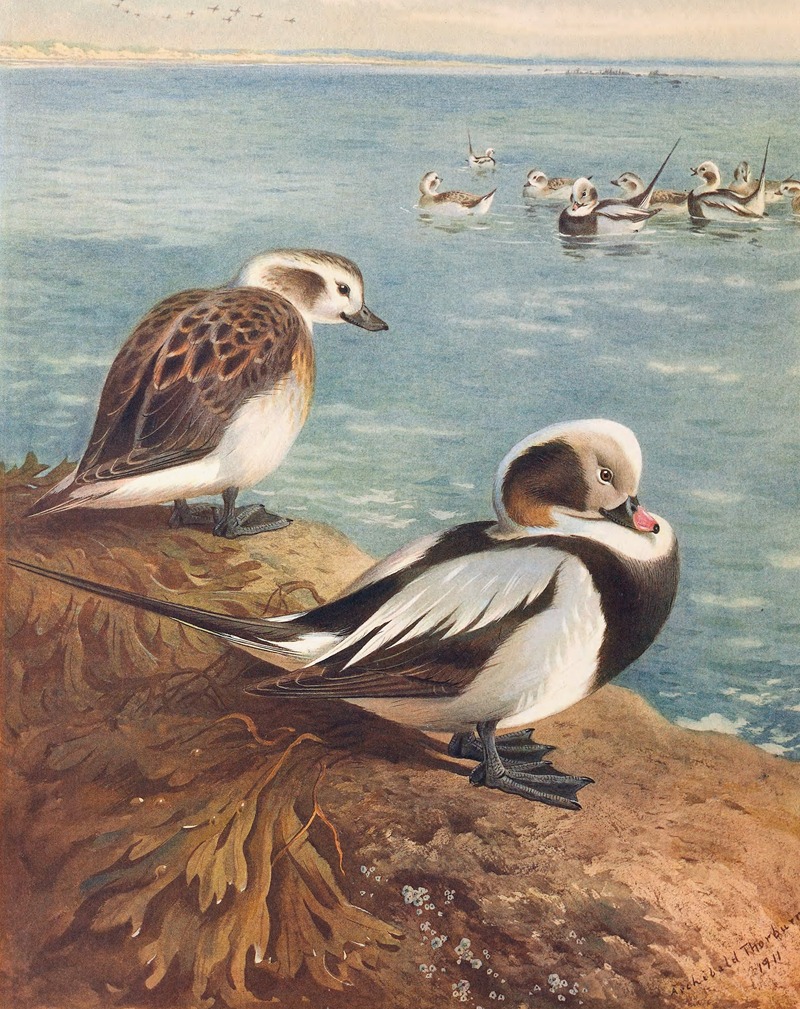
Long-Tailed Duck
A hand-painted replica of Archibald Thorburn’s masterpiece Long-Tailed Duck, meticulously crafted by professional artists to capture the true essence of the original. Each piece is created with museum-quality canvas and rare mineral pigments, carefully painted by experienced artists with delicate brushstrokes and rich, layered colors to perfectly recreate the texture of the original artwork. Unlike machine-printed reproductions, this hand-painted version brings the painting to life, infused with the artist’s emotions and skill in every stroke. Whether for personal collection or home decoration, it instantly elevates the artistic atmosphere of any space.
Archibald Thorburn (1860–1935) was a Scottish artist renowned for his detailed and lifelike depictions of wildlife, particularly birds. His work is characterized by its meticulous attention to detail and the ability to capture the essence of his subjects in their natural habitats. One of his notable works is "Long-Tailed Duck," which exemplifies his skill in portraying avian life.
The "Long-Tailed Duck" painting showcases Thorburn's expertise in watercolor, a medium he frequently employed to achieve the delicate nuances of color and texture in his subjects. The long-tailed duck, known scientifically as Clangula hyemalis, is a sea duck native to the Arctic regions of North America, Europe, and Asia. It is recognized for its distinctive long tail feathers and striking plumage, which varies between the breeding and non-breeding seasons.
Thorburn's depiction of the long-tailed duck captures the bird in a naturalistic setting, likely inspired by his extensive field observations and studies of wildlife. His ability to render the subtle interplay of light and shadow, as well as the intricate patterns of the duck's feathers, demonstrates his deep understanding of both his subject and his medium. The painting reflects Thorburn's commitment to realism and his passion for the natural world, qualities that have made his work highly regarded among ornithologists and art enthusiasts alike.
Thorburn's career spanned the late 19th and early 20th centuries, a period during which he became one of the most celebrated wildlife artists in Britain. He was influenced by the work of earlier natural history artists but developed his unique style that emphasized both scientific accuracy and artistic beauty. His paintings were often used to illustrate books on birds and wildlife, contributing to the popularization of ornithology and natural history during his time.
The "Long-Tailed Duck" painting is part of Thorburn's broader body of work that includes numerous illustrations of British and European birds. His paintings were not only appreciated for their aesthetic value but also served as important records of bird species, some of which have experienced significant changes in population and distribution since Thorburn's time.
Thorburn's legacy continues to be celebrated today, with his works held in high esteem by collectors and institutions. His paintings are featured in various public and private collections, and his influence can be seen in the work of contemporary wildlife artists who strive to capture the beauty and diversity of the natural world with the same level of dedication and skill.
In summary, "Long-Tailed Duck" by Archibald Thorburn is a testament to the artist's remarkable ability to blend scientific precision with artistic expression. Through his detailed and lifelike portrayal of the long-tailed duck, Thorburn not only contributed to the field of wildlife art but also fostered a greater appreciation for the avian species he so lovingly depicted.





